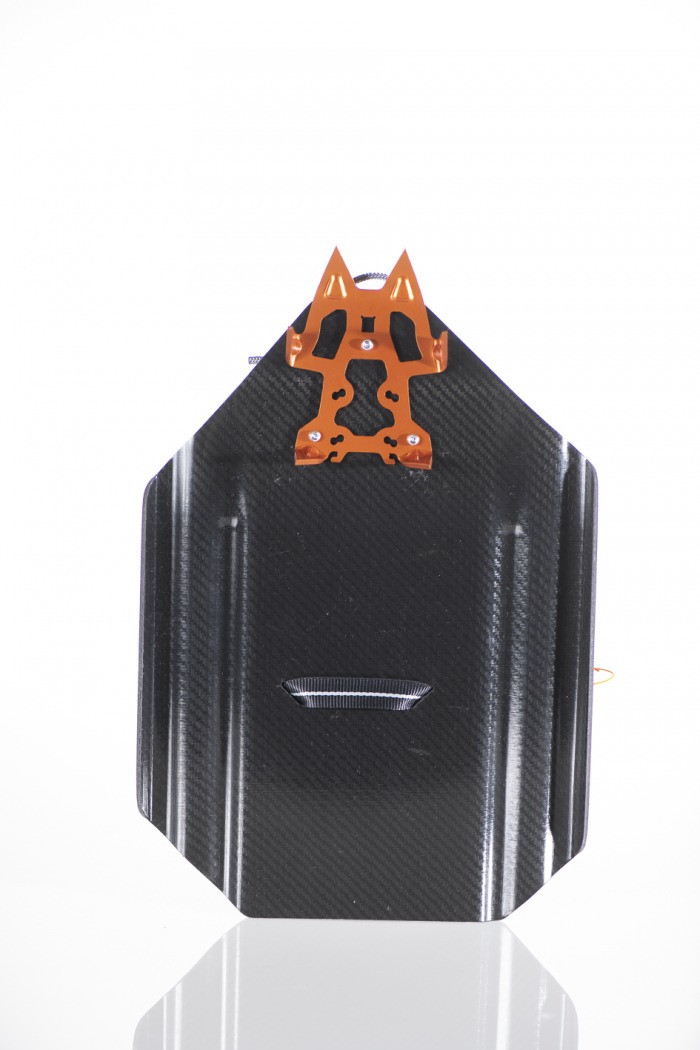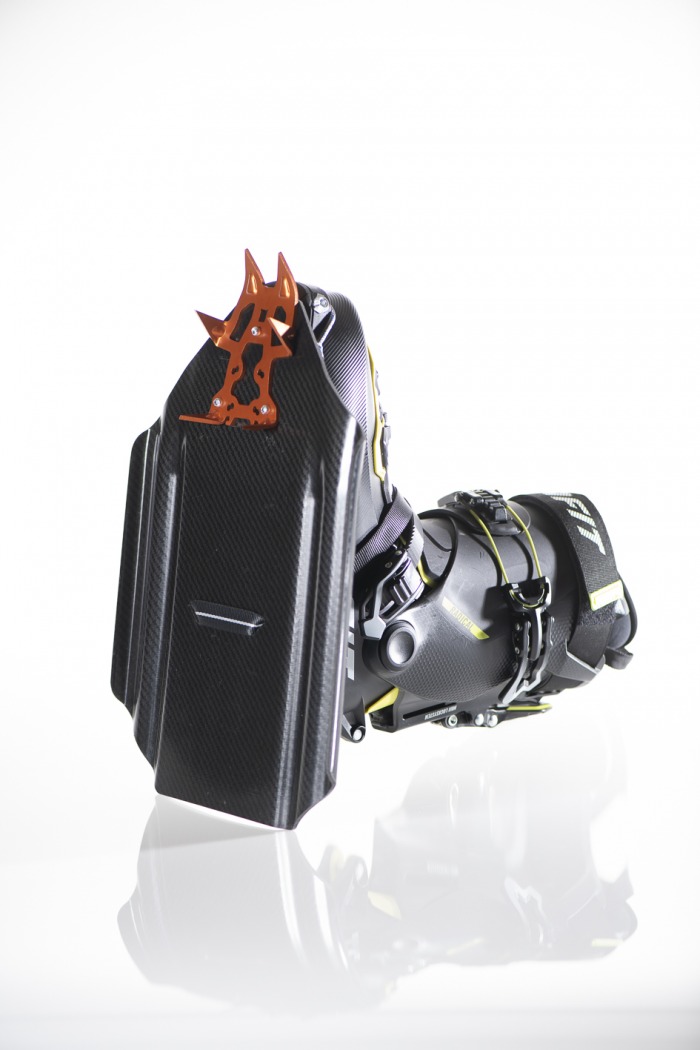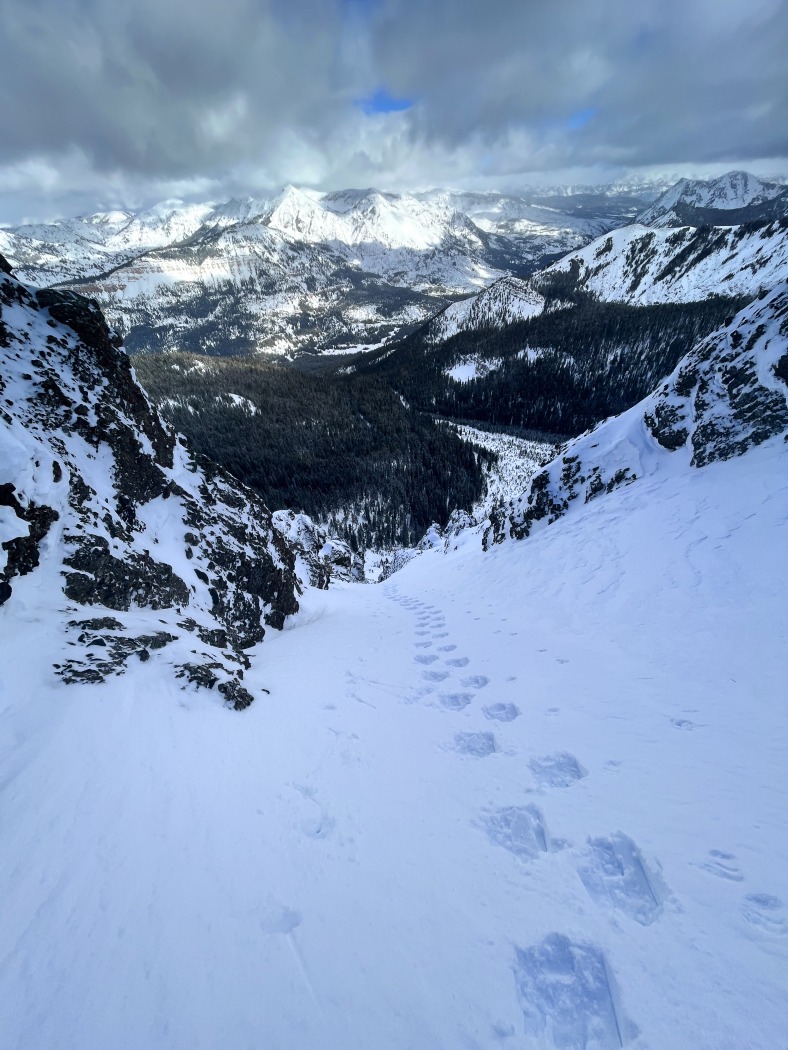
Ascent plate tracks in an undisclosed Montana couloir.
I’ve been using ascent plates of various styles for the last six years or so, and when you need them, they make an otherwise exhausting booter, more efficient. If you’re unfamiliar with ascent plates, imagine a thin “plate” of rigid material attached to your ski boot. Without the plate, you might kick two or three times in deep snow to create a firm step. Kick step, or “boot” again. Repeat. That’s just in softish snow. With the plate, you have more surface area to keep your boots from sinking deep. They work great in deep powder, of course, but I find them even more useful for ascending breakable crust.
Here’s an example of a potential line that only became accessible due to carrying ascent plates: My partner, Gavin Hess, and I were en route to the Diagonal Couloir on Mount Owen in GTNP. South faces were firmed up with a stout crust that almost supported bodyweight—basically the worst kind of travel conditions: can’t skin and can’t boot pack without an insane amount of effort. Ascent plates to the rescue. The plates allowed us to quickly ascend the crusted Koven couloir and access good snow on the other side. Even navigating some alpine ice mid-couloir was no problem with these plates due to how they nest between the boot sole and the crampon.
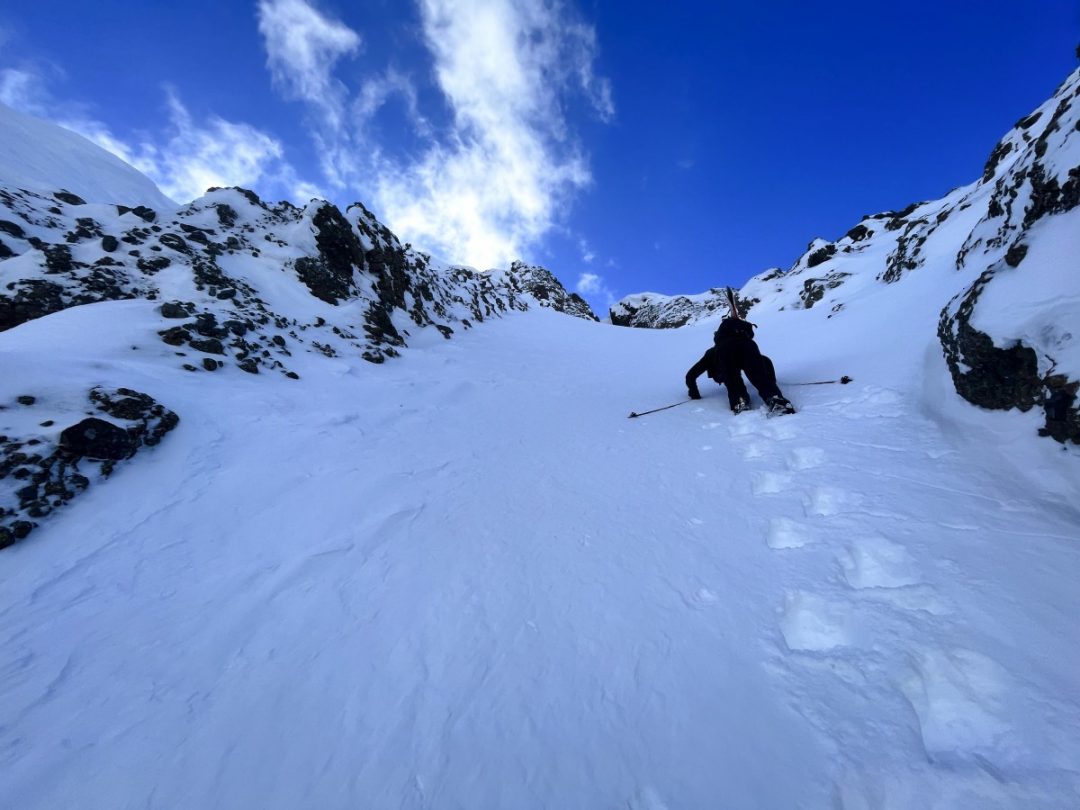
Some may call it vertical snowshoeing—I call it efficient with a “plate” attached to my boot.
Ascent plates were a once niche tool that is quickly growing in popularity. For years skiers and riders have been wallowing up steep and deep lines looking for a way to maximize efficiency in the deep snow. Homemade plates and modified snowshoes were the early solutions, until Verts, a still popular item with snowboarders, hit the market. Fast forward a few years to 2004, when Billy Goat Technologies (BGT) introduced the Ascent Plates. These anodized aluminum plates allow riders and skiers to have flotation in deep snow and utilize crampons to maximize the terrain they are functional in and minimize transitions.
A past look at ascent plates with an informative comment thread.
These plates were developed by some hard-charging Coast Mountain skiers and riders putting down big routes in deep snow. (Imagine the snow slogs that close to the Pacific.) The Billy Goat Plates have been in a league of their own, with little direct competition, until the newest iteration of ascent plates developed by Auftriib, a Swiss company. Auftriib released the Cramplifier within the last year, they are a lighter weight option to BGT’s ascent plates. (Specs are listed below.) Auftriib also makes a version with the crampon hard-mounted to the plate called the Crampow.
Let’s dig in and have a first look at these new ascent plates to see where each holds a place in—I can’t believe I’m writing this—your ascent plate quiver.
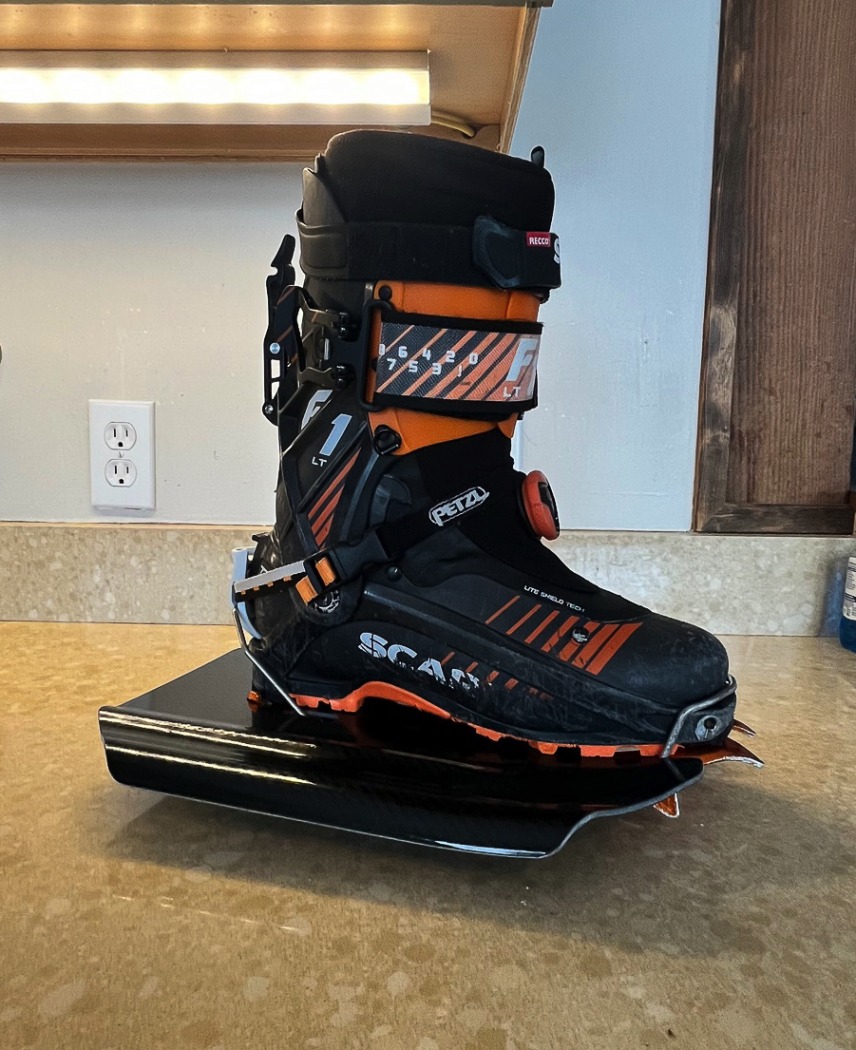
The Auftriib Cramplifier fitted on a Scarpa F1 LT and a Petzl Leopard FL crampon.
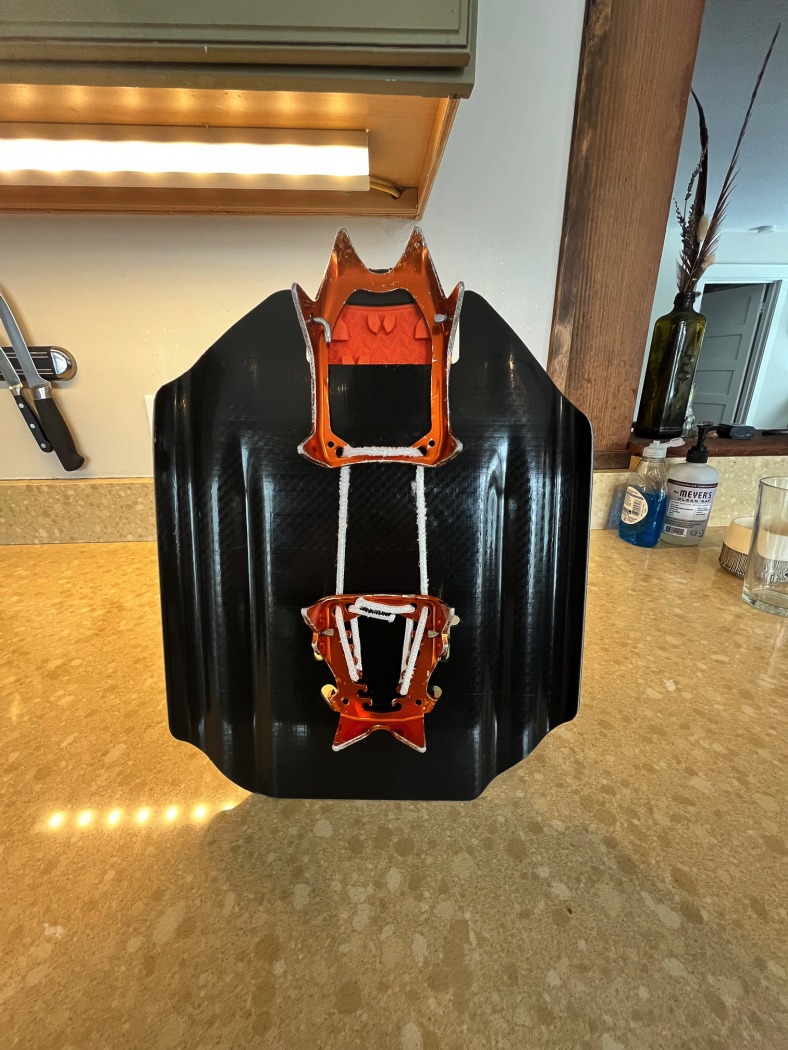
A look at the underside of the Cramplifier.
Made of a high-quality “self-reinforced” polypropylene compound that is 100% recyclable, the Cramplifier plates are light and easy to slide into the pack. Weighing in at just over 400 grams per pair, these are now the lightest ascent plates on the market. These plates have a sleek design and are about 2 inches wider than the BGT plates, with similar lengths. They are asymmetrically fit for each foot and are designed to have the crampon heel throw slotted through the plate before attaching them to your crampons.
I have used the Cramplifiers with Petzl’s Leopard FL and Irvis Hybrid crampons; both models work great. The Auftriib website states the Cramplifer have been used successfully with the Edelrid Shark Lite, Grivel Air Tech, and the BD Serac Clip. Although we have not tested this, the plates can be modified with standard wood and metal cutting tools to help better fit other crampon models.
To me, the most innovative parts of these plates are the shape and the material they are made with. The polypropylene compound is durable but lightweight. The Aluminum that BGT plates are made with is durable but bends easily and can become sharp if you accidentally ding them on rocks.
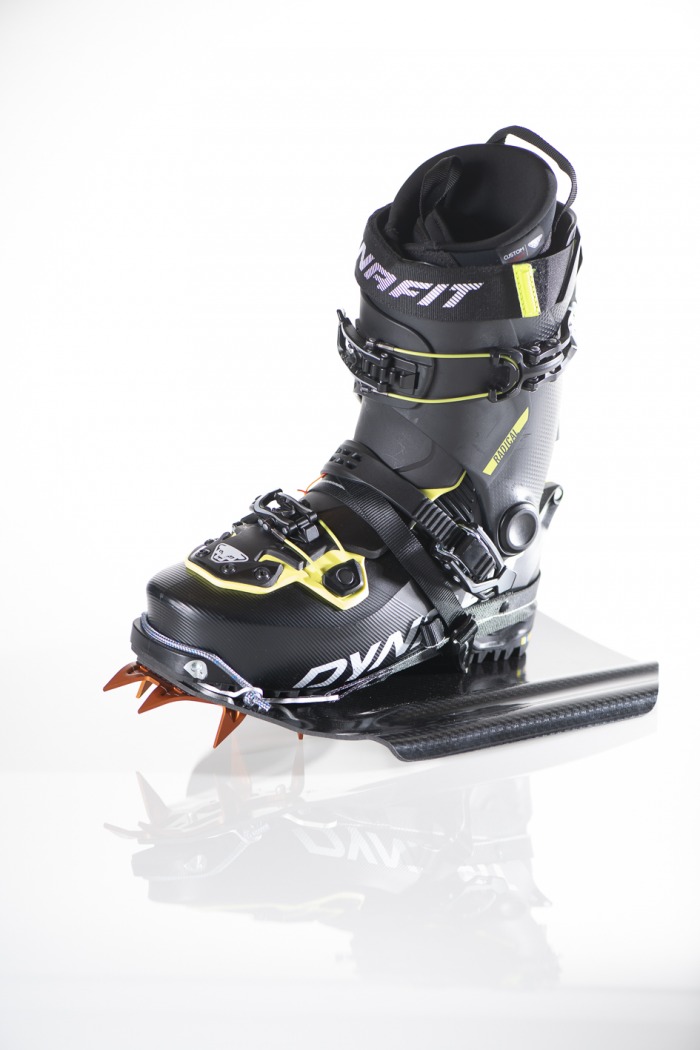
The Crampow features a built in front point system. Photo: Auftriib.
The Crampows are made of the same material as the Cramplifier, but they utilize a non-removable crampon toe attached riveted to the plate. The Crampow also uses a unique strap system that attaches the plate to your boot via the toe and heel welt. I’ll add more on this in the deep look, but I needed to watch the Auftriib video a few times to dial the fit.
Editor’s note: according to Auftriib, the Crampow is not currently CE certified. Purchases are restrictd to those signing a consent agreement. (You can find a copy of the consent agreement here.) By signing the agreement, you agree to the following:
“- I do this in full awareness that the Crampow product is a prototype without any standard testing, type testing or systematic laboratory testing.
– I.e. Crampow does not currently meet any standards for personal protective equipment according to EU law or Swiss law.
-I therefore assume full liability for any damage that may occur in connection with the use of the prototypes.”
Quick Comparison to other plates:

The Verts are made of mold injected nylon, they’re great for moving around in soft snow and non-technical terrain.
Verts (1,110g/pair) ($125) (840g/pair for LT version) ($210)
Toted as “The Ultimate Snow Climbing Tool” on their website (tktktkt). Made of mold injected nylon, they’re great for moving around in soft snow and non-technical terrain.
Pros:
-No crampon required
-Soft and hard boot friendly
-Price
Cons:
-Bulky in the pack
-Troublesome on harder snow surfaces and ice, they are simply no rigid or sharp enough to penetrate truly firm surfaces when a slipped foot might be costly.
-Heavy
BGT Ascent Plates (679g/pair Size S) ($160)
These ascent plates are a tried and true product developed by hard-charging Canadians. That’s got to have some value.
Pros:
-Lightweight
-Work well in everything from deep pow to firm ice.
-Crampon compatible
Cons:
-Edges of plates can bend and get sharp causing tears on your pack
-Less floatation
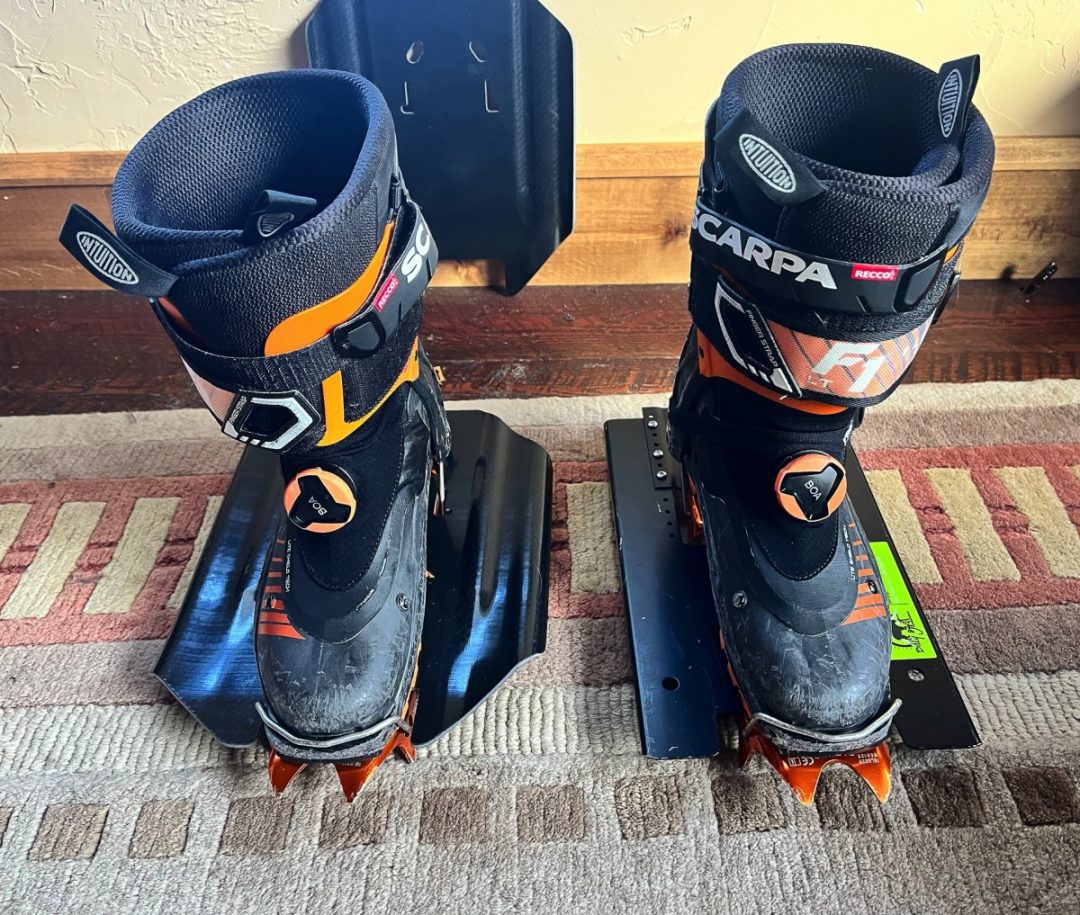
Same boot, same crampons: The Auftriib Cramplifier (left), the BGT Ascent Plate (right).
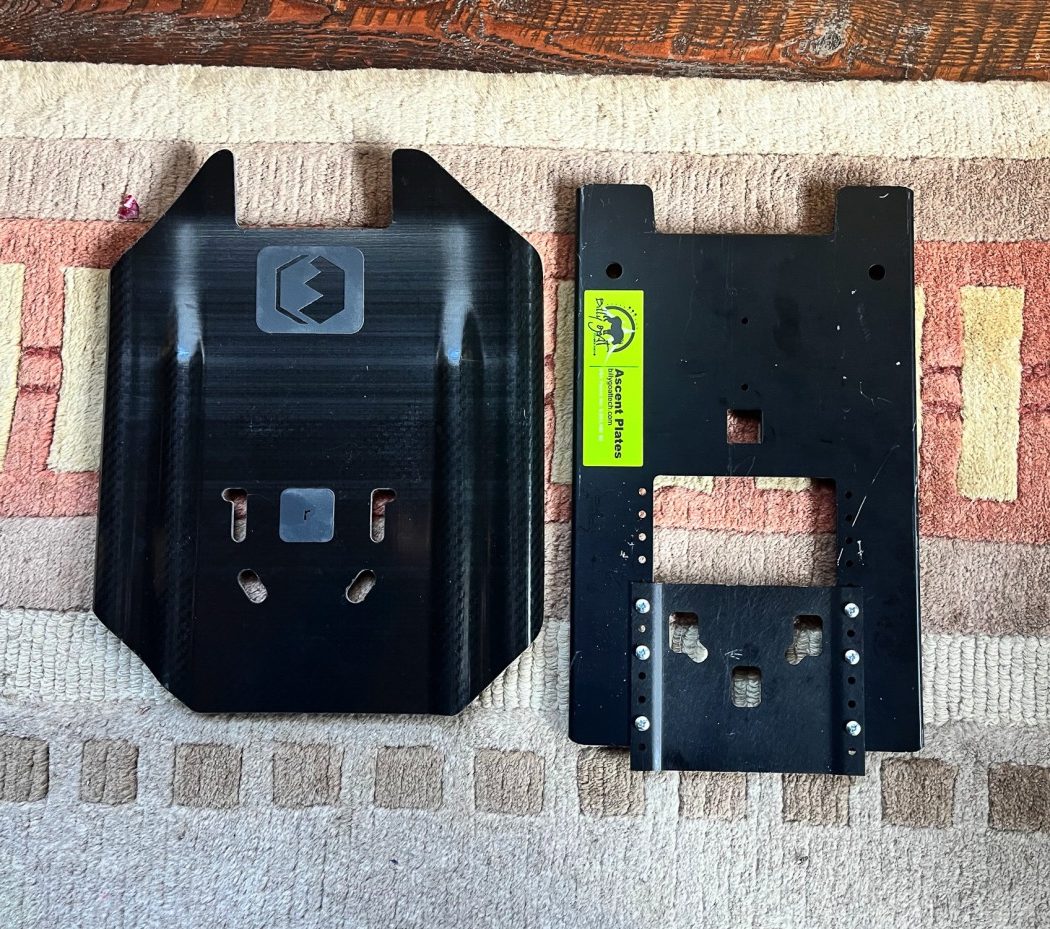
Both plates without crampons: on the left the The Auftriib Cramplifier, the right is the BGT Ascent Plate.
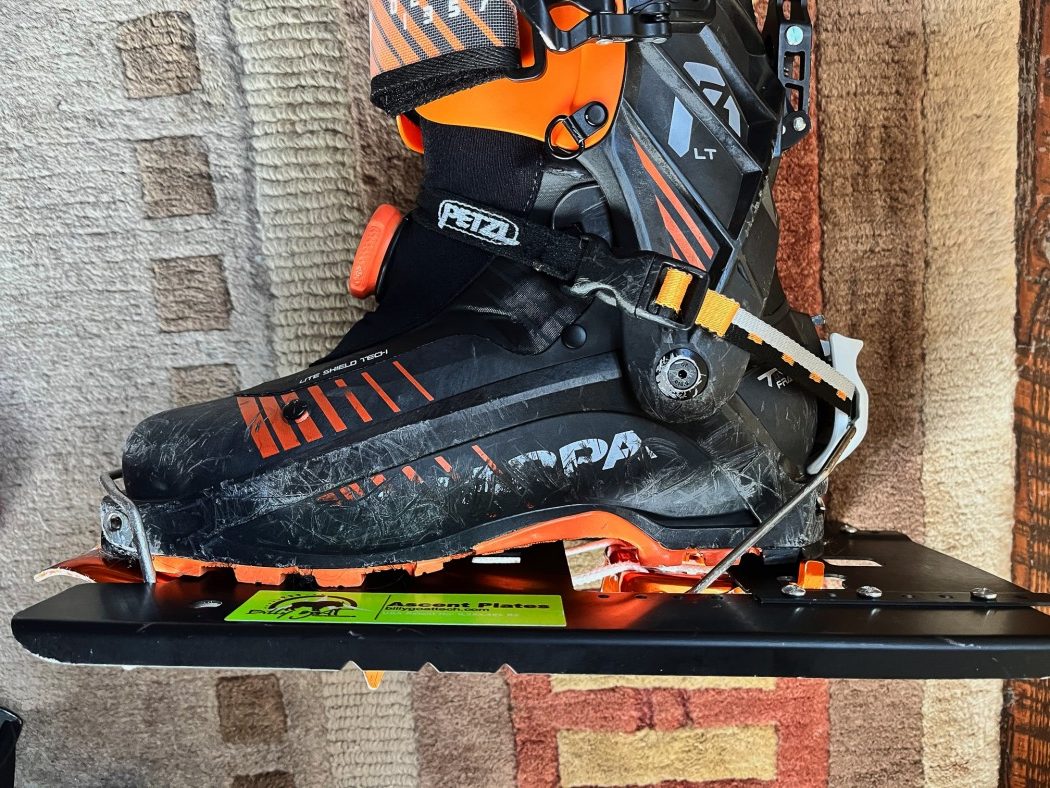
The BGT Ascent Plate: side view.
Auftriib Cramplifier (404g/ pair Size S) ($176)
Pros:
-Lightest ascent plate on the market
-More float
-Crampon compatible
-Soft edges
Cons:
-Heel bail must be removed to install plates
Auftriib Crampow (777g/pair) ($290)
Pros:
-All in one crampon and plate
-Good flotation
Cons:
-Bulky in pack
-involved to put on
Ben grew up climbing, skiing, and fly-fishing in the Greater Yellowstone
Ecosystem and has been lucky to continue living in this great place. Ben began
guiding fly-fishing at age 18 while attending college at the University of Montana,
where he studied cartography and resource conservation. At age 23, he began a
career as a mountain guide and began work for Exum mountain guides in
Jackson, Wyoming, where he lived for 5 Years. Recently, Ben has moved back to
the mountains of his childhood and now resides in Red Lodge, MT, with his Wife
Leslie and his Dog Cash. He now splits time managing a family fly-fishing
business, ski guiding in Cooke City, and of course, getting into the mountains as
much as possible.

